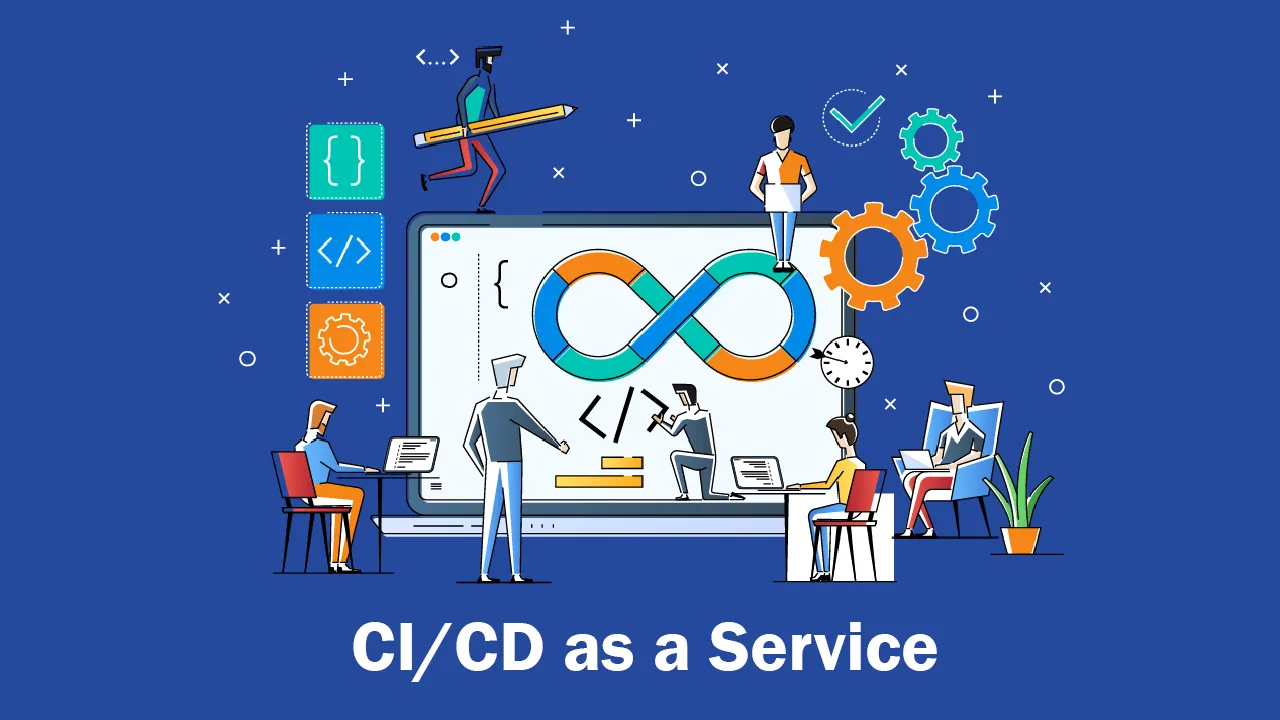CI/CD and the cloud are like peas in a pod. The cloud eliminates the agony of introducing and keeping up actual servers. CI/CD automates much of the functions in building, testing, and deploying code. So why not join them and eliminate sweated labor in one go?
There are many CI services, and they all do the same things from a theoretical perspective. They start with a rundown of tasks like building or testing. And when you submit your code lines, the tools work through the list until they run into errors. If there are no errors, both IT and developers are happy.
CI is probably the best new operation model for DevOps groups. Likewise, it is a collaboration best practice, as it empowers app engineers to zero in on business needs, code quality, and security since all steps are automated.
Anybody can use CI in software development. Though, its biggest benefactors are large teams that are collaborating on the same and interlocking code blocks.
The introduction of CI allows software developers to work independently on the same features. When they are ready to incorporate these features into a final product, they can do so independently and quickly.
CI is an important and well-established practice in modern, highly efficient software engineering organizations.
Using CI enables development tasks to be done independently and uniformly among designated engineers. When a task is completed, the engineer will introduce that new work into the CI chain to be combined with the rest of the work.
The most intensive executions of a CI build and edit code before testing and retesting it, all looking for new mistakes and conflicting qualities that may have been made as various colleagues submit their code.
CI servers synchronize the work of the software engineers and assist the teams with recognizing issues.
Tasks for the CI server end with the tests. However, of late, an ever-increasing number of teams are stretching out lists to incorporate the new code’s deployment. This has been dubbed continuous deployment.
Automated deployment worries some people, and they will regularly add in some manual pauses. Injecting a shot of human assurance and accountability into the process puts them at ease. This is dubbed Continuous Delivery. It conveys the code to testing where they trust that a human will make the last push to deployment.
If CI is excellent in the server room, it can be much better in the cloud, where there is a good chance of faster delivery and greater efficiency and speed.
Clouds can split a function and perform tasks in parallel. Services start with an enormous hardware pool and are shared by multiple groups.
As always, there are some risks and worries, and the biggest can be the a sense of loss of control. All cloud services demand that you give your code to a third party, a choice that may cause one to feel uncomfortable. This being said — security is a huge part of the cloud services offering in this sense.
Apart from all major languages’ support, SaaS CI/CD services include much smaller, rarer, and newer ones. Task lists are more likely to be included as commands for another shell or command line, so continuous integration tools continue to issue commands until the list is exhausted or a particular road is invincible. Some languages like Java offer complex options, but the tools can accomplish anything you can do with the command line for the most part.
CI/CD as service means that developers can:
- Use the company self-service portal to find the CI / CD chain they want and get it delivered quickly. They get to focus on building apps and features and not configuring elements in the pipeline.
- Get all the CI / CD items of their choice; SVN Jenkins, Gits, jFrog Artifactor. The elements are automatically shipped and ready to work together without the extra effort required, contrary to the traditional method where they will have to prepare each item manually.
- Deploy CI / CD chains error-free and without misconfiguration. IT Ops can serve multiple CI / CD configurations for individual LoB groups.
- Send a CI / CD chain wherever they want, as it can work on any infrastructure. They spend less time on manual configurations and more time serving their internal customers.
So, we’ve established that Continuous Integration (CI) enables you to continuously add code into a single shared and readily accessible repository. On the other hand, Continuous Delivery (CD) empowers you to continuously take the code in the repository and deliver it to production.
And you already know, that as CI/CD pipelines may be amazing in the server room — they are mind-blowing on the cloud.
From GitLab to Bitbucket and AWS to CodePipeline, herein are some of the best CI/CD SaaS services to transform your app-building, testing, and deployment:
This is Amazon’s CI/CD tool. AWS CodePipeline effectively conveys code to an AWS server while being available to more intricate pathways for your data and code. The tool offers a decent choice of pre-customized build environment for the leading languages: Java, Node.js, Python, Ruby, Go, .Net Core Android. It drops the result in an S3 bucket before directing it to a server for deployment.
There are so many layers with various names. For instance, CodeBuild gets your most recent code from CodeCommit when its CodePipeline starts it and afterward hands it off to CodeDeploy. If you must save time on configuration, you can start with CodeStar, which offers another automation layer. It’s an advantage that you don’t have to pay for these Code layers. AWS charges you only for computing and storage assets used in the cycle.
#technology #aws #azure #devops #ci/cd
